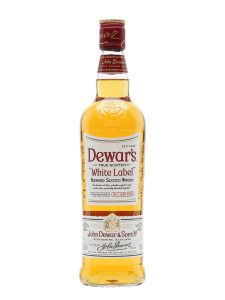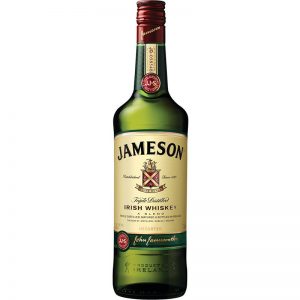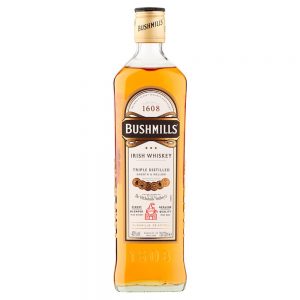Gateway Series #7: Dewar’s White Label Blended Scotch Whisky
Dewar’s White Label Blended Scotch Whisky
40% ABV, 80 Proof
Around $30, Available Everywhere

What The Distillery Says:
The long-celebrated Dewar’s White Label was created by John Dewar & Sons first master blender AJ Cameron in 1899 and has been the company’s leading blend for over 100 years. Only the Dewar’s Master Blender can unlock the secrets of this closely guarded recipe, which has been passed down from Master Blender to Master Blender and continues to produce a smooth, perfectly balanced taste that never varies.
A blend of up to 40 single malt and grain Scotch whiskies, White Label’s distinctive heather and honey notes evoke the rich heritage of the Scottish Highlands, thanks to the fine Aberfeldy single malt at its heart.
What Richard Says:
Nose: Citrus (navel oranges?) and wood chips. Water opens up the wood, hides the citrus, and adds a medicinal tinge.
Palate: I know this is going to sound cliche but Dewar’s tastes like Scotch. By that, I mean it tastes like the stereotypical Scotch. You get oak notes, peppery spice, a hint of iodine, and that’s about it. It’s delicate on the front and back of the palate but it zings you with pepper in the middle. Nothing too special about the flavor profile.
Finish: Very smooth. The Dewar’s leaves peppered oak behind and not much else.
Comments: Dewar’s White Label isn’t bad, it’s just not special in any way. I’ve tasted a lot of the newer things that Dewar’s has been developing recently and they are all pretty good. The Signature is exceptional (review to come). However, their standard expression isn’t much to write home about. It’s like the Budweiser of Scotch. I would probably put it down in cocktails, over ice, or with soda.
Rating: Probably Pass
What Matt Says:
Nose: When I first poured this dram, I got a lot of caramel and a little vanilla. However, once the whisky had a chance to settle, there was nothing but nail polish remover. Perhaps pouring this through a wine aerator would open up the nose a little more. A little water brings a bit of peat to the party, but all other notes are muted to obscurity.
Palate: The dominant flavor here is tobacco; there is a subtle sweetness that brings to mind sweet cream. Again, water brings out a little peat. It also helps tone down the tobacco. Unfortunately, the sweeter notes lack the punch to shine through and hang out at the back. Some burn with this one (water helps).
Finish: Long finish of cigar butts and a slight burn at the sides of the tongue.
Comments: Not a bad intro into blended Scotch (partly because of its availability). I cannot recommend that you sip this though. White Label is better enjoyed on the rocks or with club soda. Dewar’s is an especially good intro into whisky for smokers and chics with daddy issues.
Rating: Probably Pass
Overall Rating: Probably Pass (unless it’s the only thing around and you have some extra soda to get rid of)
Gateway Series #7: Dewar’s White Label Blended Scotch Whisky Read More »



